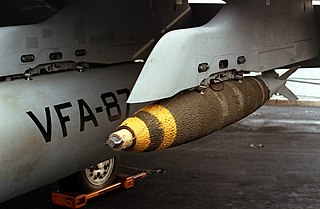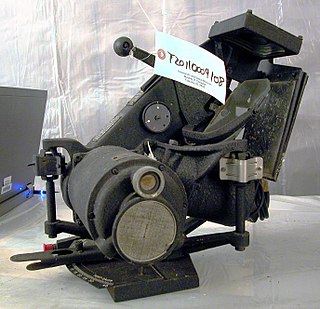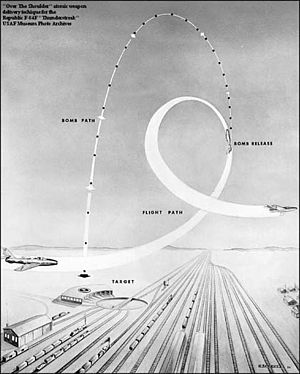
An interceptor aircraft, or simply interceptor, is a type of fighter aircraft designed specifically for the defensive interception role against an attacking enemy aircraft, particularly bombers and reconnaissance aircraft. Aircraft that are capable of being or are employed as both ‘standard’ air superiority fighters and as interceptors are sometimes known as fighter-interceptors. There are two general classes of interceptor: light fighters, designed for high performance over short range; and heavy fighters, which are intended to operate over longer ranges, in contested airspace and adverse meteorological conditions. While the second type was exemplified historically by specialized night fighter and all-weather interceptor designs, the integration of mid-air refueling, satellite navigation, on-board radar and beyond visual range (BVR) missile systems since the 1960s has allowed most frontline fighter designs to fill the roles once reserved for specialised night/all-weather fighters.

A dive bomber is a bomber aircraft that dives directly at its targets in order to provide greater accuracy for the bomb it drops. Diving towards the target simplifies the bomb's trajectory and allows the pilot to keep visual contact throughout the bomb run. This allows attacks on point targets and ships, which were difficult to attack with conventional level bombers, even en masse.

An unguided bomb, also known as a free-fall bomb, gravity bomb, dumb bomb, or iron bomb, is an aircraft-dropped bomb that does not contain a guidance system and hence simply follows a ballistic trajectory. It includes all aircraft bombs in general service until the latter half of World War II, and the vast majority until the late 1980s, which were known simply as "bombs".

A glide bomb or stand-off bomb is a standoff weapon with flight control surfaces to give it a flatter, gliding flight path than that of a conventional bomb without such surfaces. This allows it to be released at a distance from the target rather than right over it, allowing a successful attack without exposing the launching aircraft to air defenses near the target. Glide bombs can accurately deliver warheads in a manner comparable to cruise missiles at a fraction of the cost—sometimes by installing flight control kits on simple unguided bombs—and they are very difficult for surface-to-air missiles to intercept due to their tiny radar signatures and short flight times. The only effective countermeasure is to intercept launching aircraft before they approach within range, making glide bombs very potent weapons where wartime exigencies prevent this.

In aircraft, an ejection seat or ejector seat is a system designed to rescue the pilot or other crew of an aircraft in an emergency. In most designs, the seat is propelled out of the aircraft by an explosive charge or rocket motor, carrying the pilot with it. The concept of an ejectable escape crew capsule has also been tried. Once clear of the aircraft, the ejection seat deploys a parachute. Ejection seats are common on certain types of military aircraft.

The Norden Mk. XV, known as the Norden M series in U.S. Army service, is a bombsight that was used by the United States Army Air Forces (USAAF) and the United States Navy during World War II, and the United States Air Force in the Korean and the Vietnam Wars. It was an early tachometric design that directly measured the aircraft's ground speed and direction, which older bombsights could only estimate with lengthy manual procedures. The Norden further improved on older designs by using an analog computer that continuously recalculated the bomb's impact point based on changing flight conditions, and an autopilot that reacted quickly and accurately to changes in the wind or other effects.
In aeronautics, a descent is any time period during air travel where an aircraft decreases altitude, and is the opposite of an ascent or climb.

A fire-control system (FCS) is a number of components working together, usually a gun data computer, a director and radar, which is designed to assist a ranged weapon system to target, track, and hit a target. It performs the same task as a human gunner firing a weapon, but attempts to do so faster and more accurately.

In aerobatics, the cobra maneuver, also called dynamic deceleration, among other names, is a dramatic and demanding maneuver in which an airplane flying at a moderate speed abruptly raises its nose momentarily to a vertical and slightly past vertical attitude, causing an extremely high angle of attack and momentarily stalling the plane, making a full-body air brake before dropping back to normal position, during which the aircraft does not change effective altitude.

A pitot-static system is a system of pressure-sensitive instruments that is most often used in aviation to determine an aircraft's airspeed, Mach number, altitude, and altitude trend. A pitot-static system generally consists of a pitot tube, a static port, and the pitot-static instruments. Other instruments that might be connected are air data computers, flight data recorders, altitude encoders, cabin pressurization controllers, and various airspeed switches. Errors in pitot-static system readings can be extremely dangerous as the information obtained from the pitot static system, such as altitude, is potentially safety-critical. Several commercial airline disasters have been traced to a failure of the pitot-static system.
A Constantly Computed Impact Point (CCIP) is a calculation provided by a weapon's sighting system. It is a predicted point of impact found from the launch platform's movement, the target's movement, gravity, projectile launch velocity, projectile drag, and other factors that can be entered. It is usually displayed on the Head Up Display (HUD).

The "SPICE" is an Israeli-developed, EO/GPS- guidance kit used for converting air-droppable unguided bombs into precision-guided bombs.

A bombsight is a device used by military aircraft to drop bombs accurately. Bombsights, a feature of combat aircraft since World War I, were first found on purpose-designed bomber aircraft and then moved to fighter-bombers and modern tactical aircraft as those aircraft took up the brunt of the bombing role.

On Friday, 24 June 1994, a United States Air Force (USAF) Boeing B-52 Stratofortress crashed at Fairchild Air Force Base, Washington, United States, after its pilot, Lieutenant Colonel Arthur "Bud" Holland, maneuvered the bomber beyond its operational limits and lost control. The aircraft stalled, fell to the ground and exploded, killing Holland and the other three crew aboard. The crash was captured on video and was shown repeatedly on news broadcasts throughout the world.

The Mark XIV Bomb Sight was a bombsight developed by Royal Air Force (RAF) Bomber Command during the Second World War. It was also known as the Blackett sight after its primary inventor, P. M. S. Blackett. Production of a slightly modified version was also undertaken in the United States as the Sperry T-1, which was interchangeable with the UK-built version. It was the RAF's standard bombsight for the second half of the war.

A precision-guided munition is a guided munition intended to precisely hit a specific target, to minimize collateral damage and increase lethality against intended targets. During the First Gulf War guided munitions accounted for only 9% of weapons fired, but accounted for 75% of all successful hits. Despite guided weapons generally being used on more difficult targets, they were still 35 times more likely to destroy their targets per weapon dropped.

The Course Setting Bomb Sight (CSBS) is the canonical vector bombsight, the first practical system for properly accounting for the effects of wind when dropping bombs. It is also widely referred to as the Wimperis sight after its inventor, Harry Wimperis.
The Vickers Blue Boar was a family of British air-launched television-guided glide bombs of the 1950s which was cancelled during development. A key role was as an anti-shipping missile, using its guidance system to attack the moving targets. It would also replace unguided bombs between 5,000 and 10,000 lb against point targets, or be equipped with a nuclear warhead. A smaller 1,000 lb (450 kg) version was also developed for testing. The name is a randomly assigned rainbow code.
A wingover is an aerobatic maneuver in which an airplane makes a steep climb, followed by a vertical flat-turn. The maneuver ends with a short dive as the plane gently levels out, flying in the opposite direction from which the maneuver began.

The Low Level Bombsight, Mark III, sometimes known as the Angular Velocity Sight, was a Royal Air Force (RAF) bombsight designed for attacks by aircraft flying below 1,000 feet (300 m) altitude. It combined components of the Mark XIV bomb sight with a new mechanical computer. It featured a unique solution for timing the drop, projecting a moving display onto a reflector sight that matched the apparent motion of the target at the right instant.
















